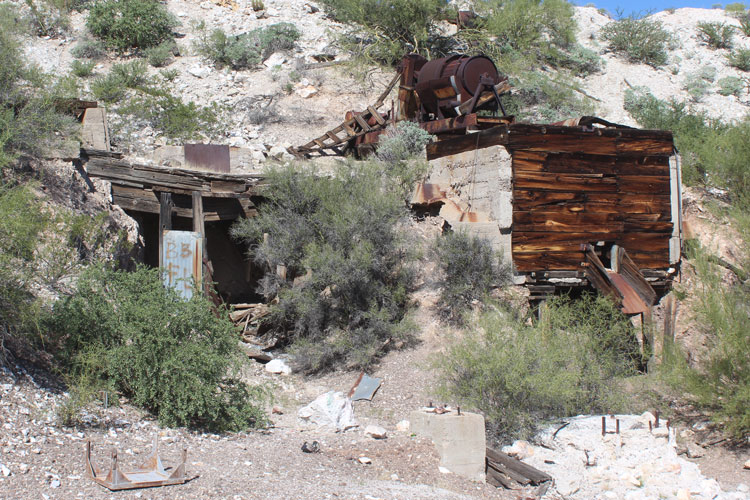 |
A Walk to the San Antonio Mine, Cabeza Prieta Wildlife Refuge
 |
The San Antonio mine was a silica and mica operation located approximately 10 miles southwest of Ajo in western Pima County. The ride and walk to the mine site makes for an enjoyable day out in a very scenic desert setting. The old mine is within the boundaries of the Cabeza Prieta National Wildlife Refuge. Entrants to the Refuge must have Visitors Permits. Those can be obtained at the Refuge office in Ajo or can be downloaded from this website. Vehicle travel is not allowed within this section of the Refuge so the last 1.5 miles of the route to the mine is limited to hikers or equestrian riders.
The driving portion of the trip to the San Antonio Mine begins south of Ajo with a turn onto Darby Wells Road from Highway 85. The goal is to get to the gate in the Cabeza Prieta boundary fence that allows access to the mine site. The GPS co-ordinates at the gate are: N 32° 18' 49" and W 112° 55' 56"
Several miles from the highway, a right fork in the road becomes the Scenic Loop Road that travels back to town. The left fork is Darby Wells Road. It soon passes by the Darby Wells Cemetery, a Hia-Ced O'odham cemetery. Darby Wells was once a native community that was located nearby. Little remains of that site.
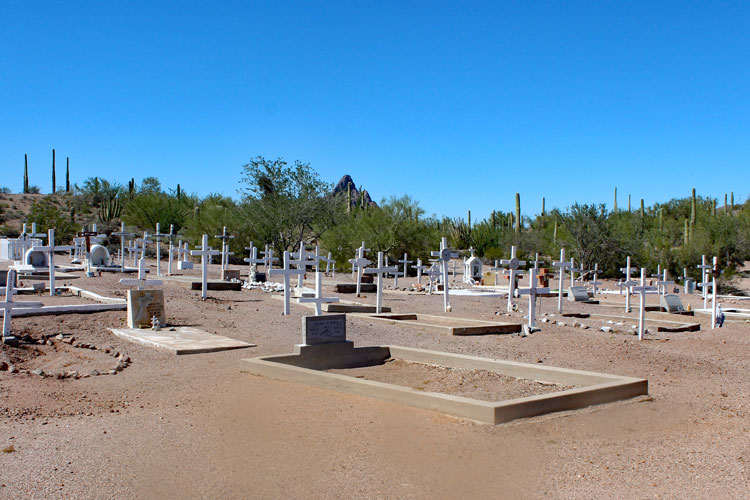 |
A mile or so west of the Darby Wells Cemetery the road turns to the south to skirt around the prominent spire of Ajo Peak.
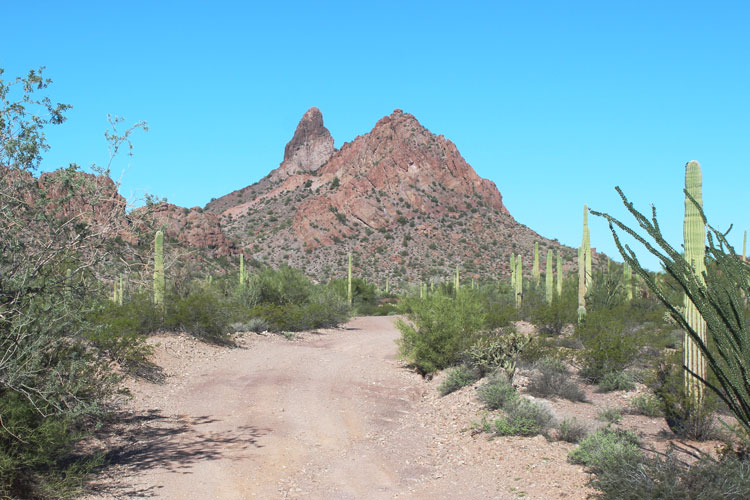 |
Once past Ajo Peak, the views to the west open up. A difference in the coloration of the rocks on a distant hillside gives away the location of the San Antonio Mine. There are several choices in roads. Choose the ones that lead toward the gps co-ordinates or that hill.
The plants here are classic Sonoran Desert growth. Saguaros, palo verde trees, ironwood trees, ocotillos, cholla cactus, and creosote bushes are all common. There are a few organ pipe cacti.
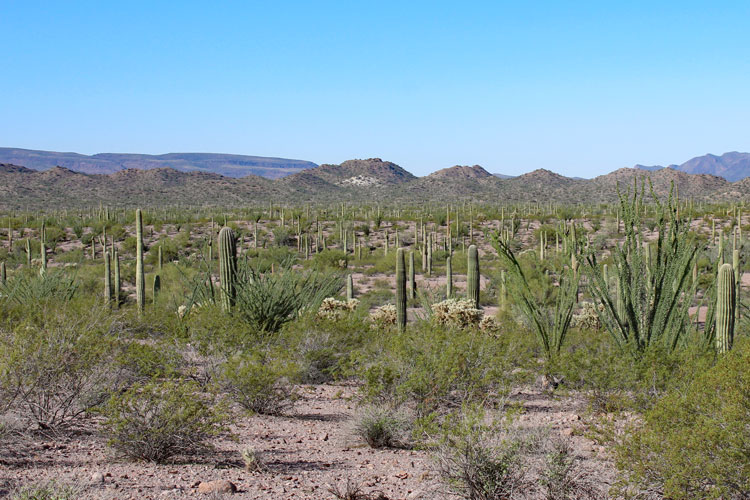 |
This is the gate at the Cabeza Prieta National Wildlife Refuge boundary. Vehicles are parked in the clearing to the side of the road. Hikers can pass through a narrow gap in the fence to register their permits and then continue on to the mine.
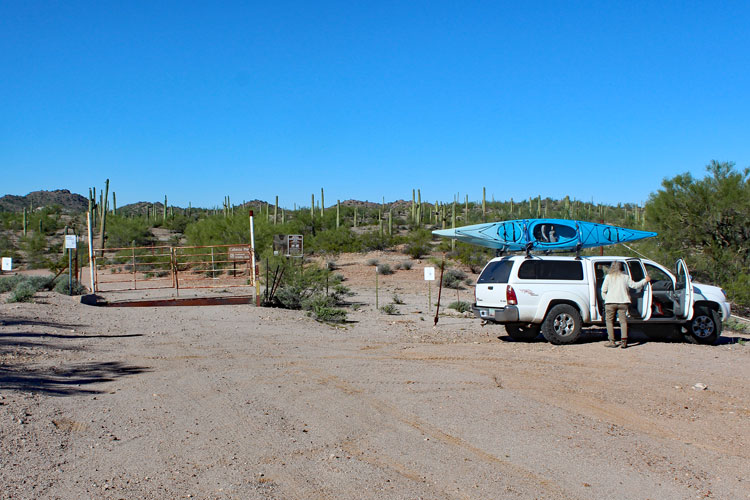 |
The topo map of the area does not show the road continuing west of the gate, but it obviously does. From the gate, it is approximately 1.5 miles to the San Antonio Mine site.
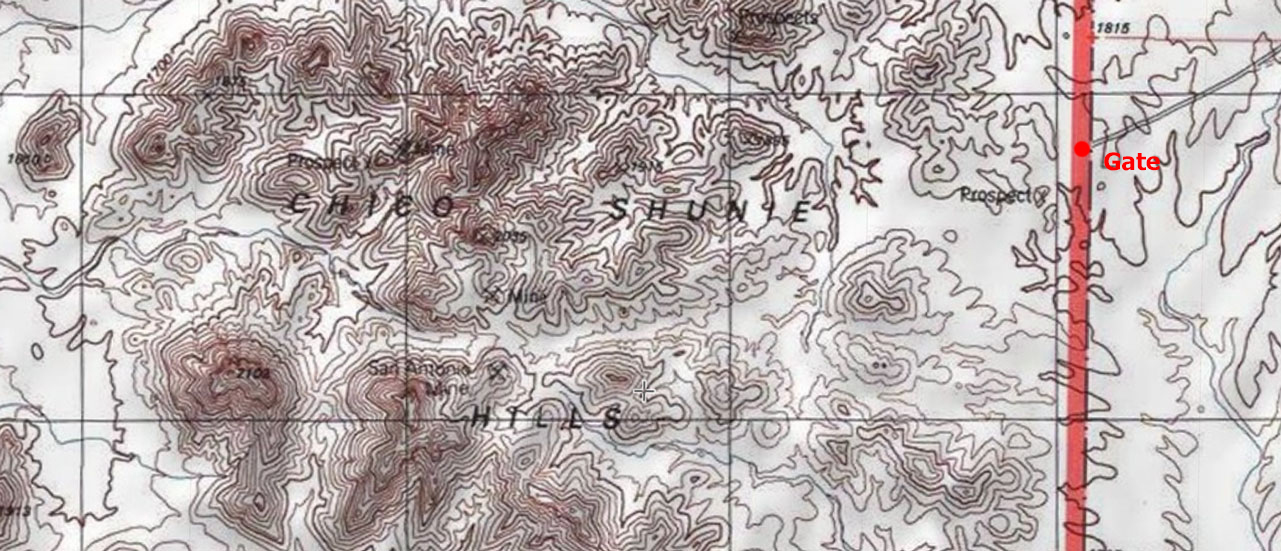 |
Each visitor to the refuge who is 18 years or older must have his/her own permit. The number on the permit is registered on a form at the kiosk. We got our permits in October of 2018 and they are good until June 30, 2019.
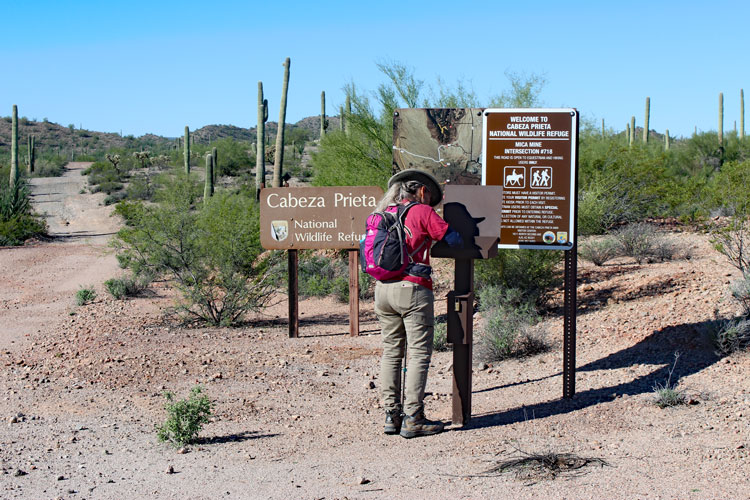 |
While the sign says that this area is open to equestrian riders, I did not see an opening in the fence that would allow that kind of access. The cattle guard across the road would be a barrier.
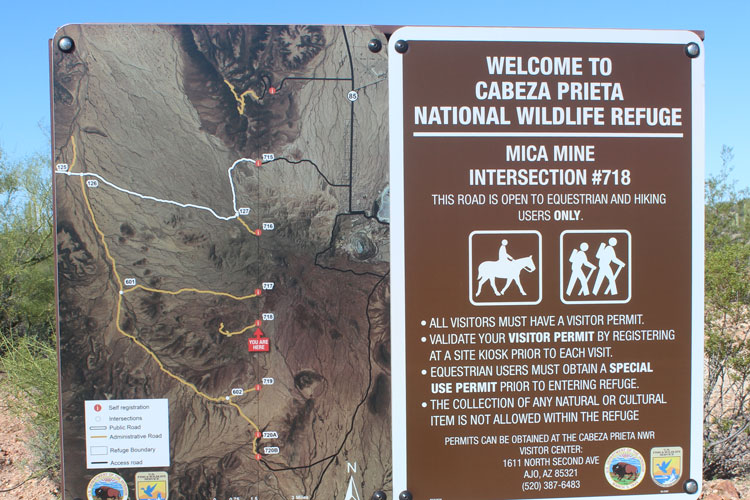 |
The "trail" to the San Antonio Mine was once the haul road for the rock materials produced by the mine. There is only 100' of elevation change encountered along the route so that makes for an easy walk.
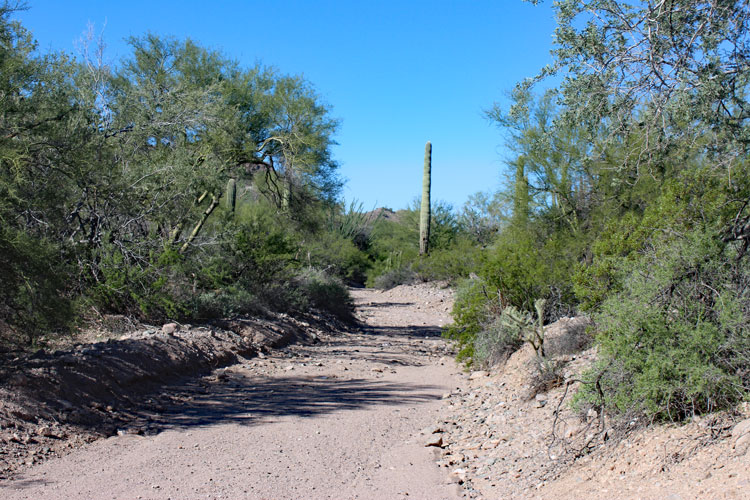 |
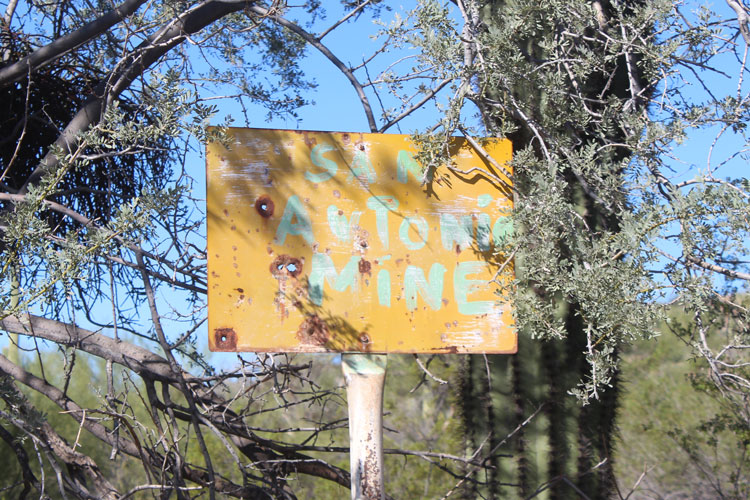 |
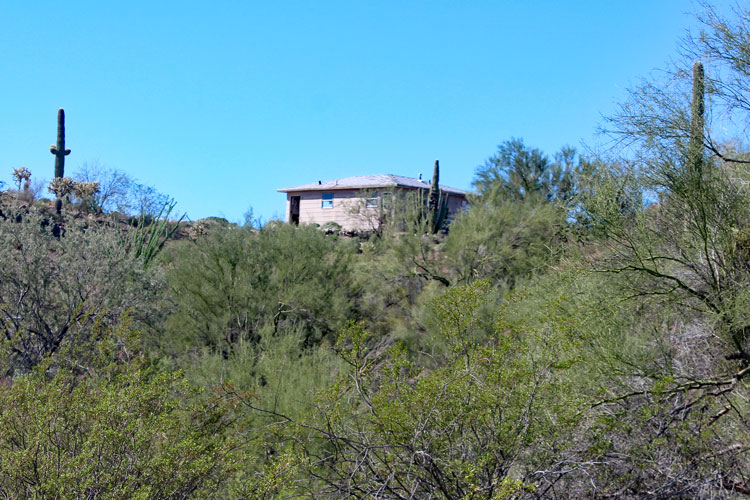 |
The San Antonio Mine was operated for at least 40 years by a Mr. Richard Ballesteros and his family. They lived in this house at the mine. Mr. Ballesteros first became involved in the mine in the 1940s and soon became a partner and then the owner of the operation. He passed away in 1998.
During the height of the mine's operation, both mica and silica were produced. The mica was shipped to a company in Buckeye, where wallboard joint compound was produced. The silica, which was obtained from the mineral quartz, was shipped to the copper smelter at Ajo. There it was used as a fluxing agent. It has been estimated that 60,000 tons of silica were shipped to the smelter. In later years, the market for the San Antonio Mine's mica disappeared. With their income limited to the sale of silica, the Ballesteros family managed to persevere and was able to keep the mining operation going for many years afterward
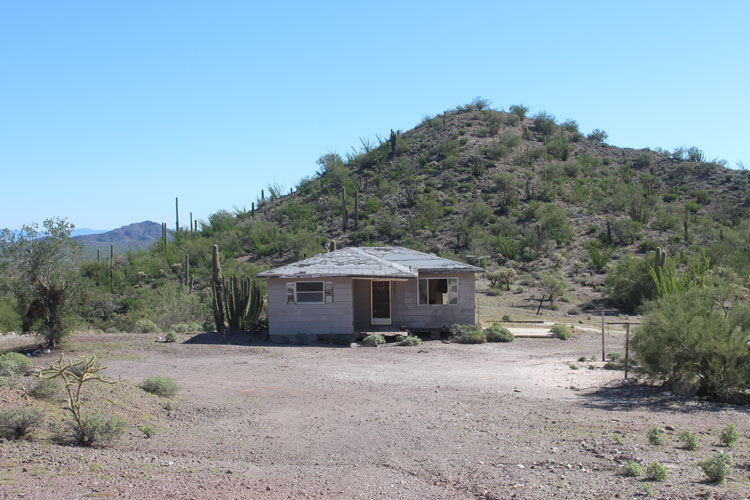 |
In the early 2000s, the refuge folks came in and cleaned up the mine site. Fortunately, not everything was removed. A few pieces of equipment were left. This small International Harvester bulldozer remains. The Ballesteros apparently had a loader that is no longer at the site.
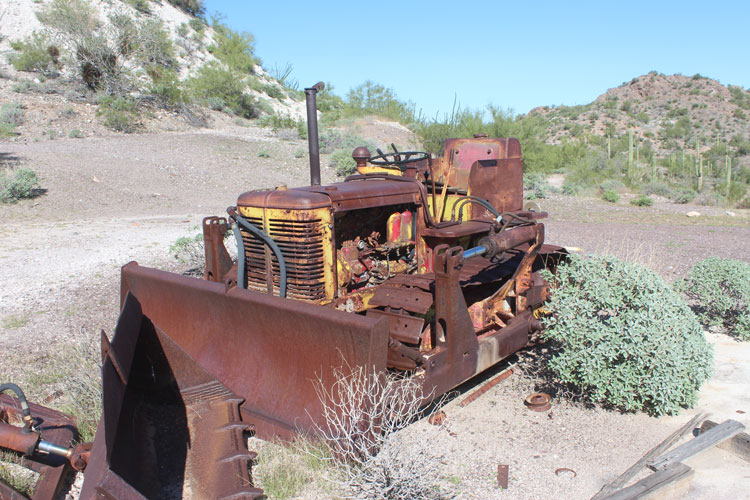 |
A trommel that was used in the preparation of the mica sits on the hillside above an ore bin. Whatever the engine was that powered this machine has been removed.
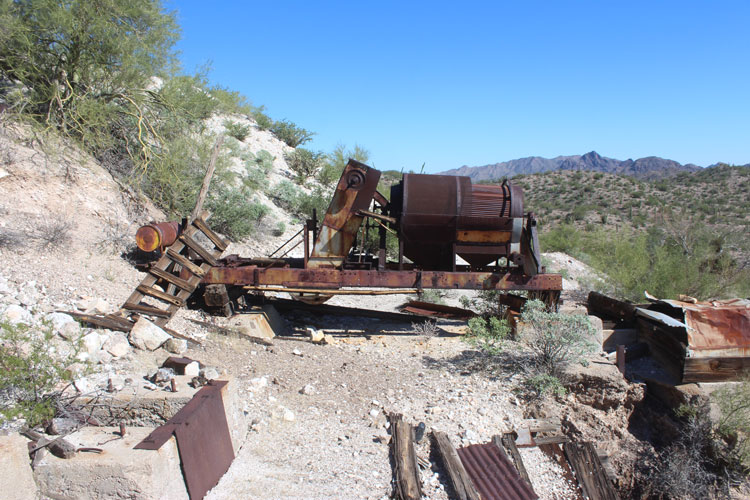 |
Trenches and open cuts were used to get to the mica and quartz. There were three different open pits located on the 25 unpatented claims that made up the mine site. This pit was the mica producer. One interesting sale was for 25 tons of the white mica that was to be used as "movie snow" which would simulate real snow in movie and television productions.
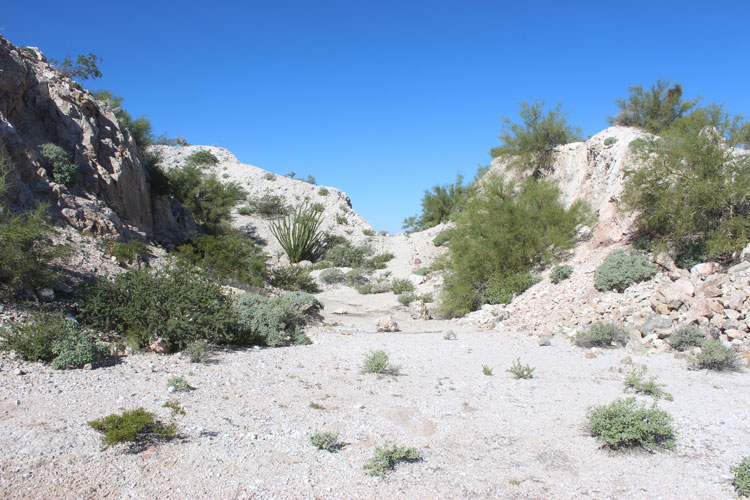 |
While there are a few organ pipe cacti to be seen on the ride and walk into the San Antonio Mine, they are much more common on the hillsides near the mine. Whatever the micro climate is in this particular area, it seems to suit these cacti well.
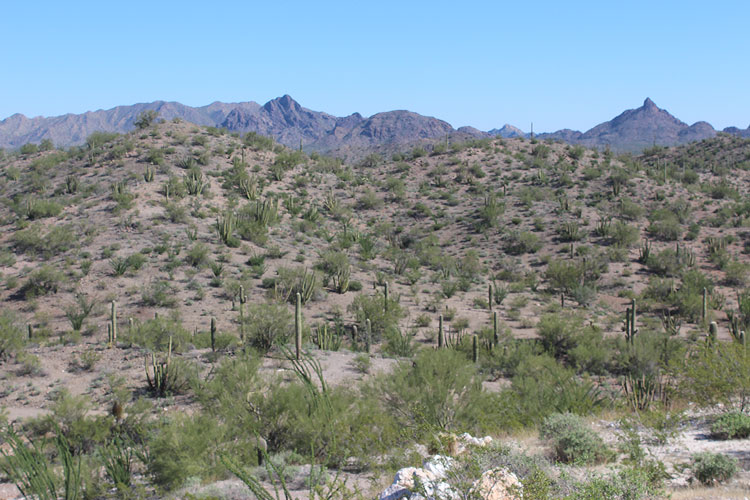 |
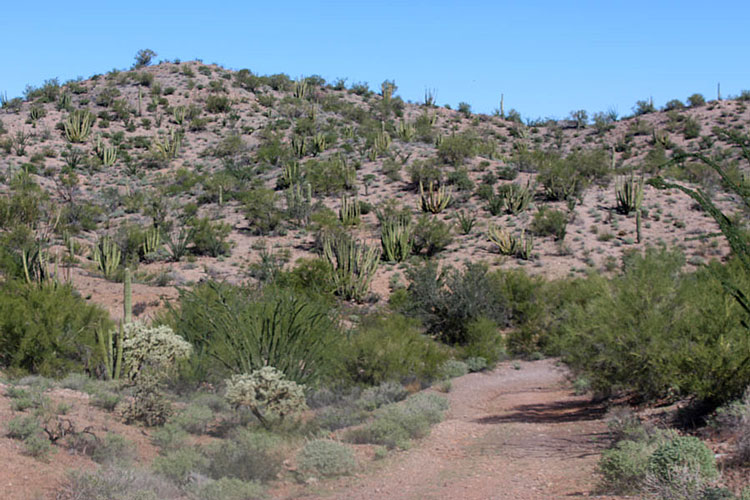 |
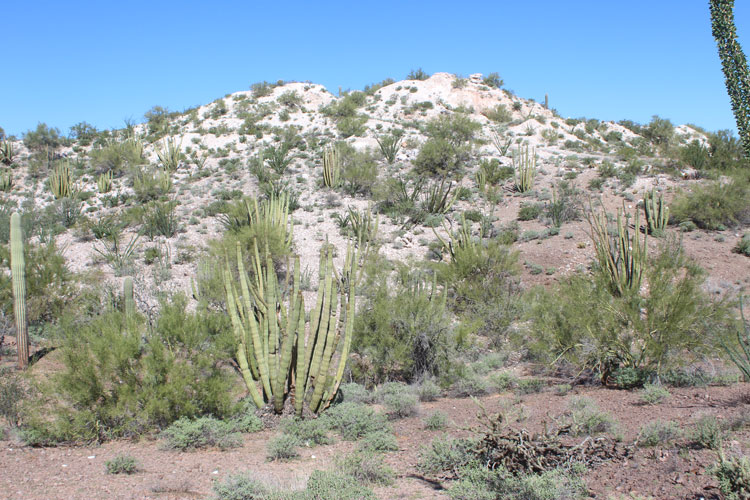 |